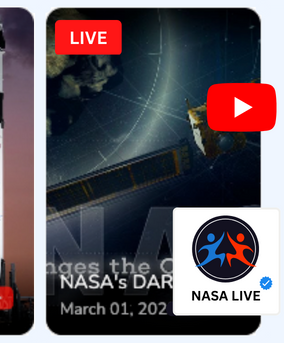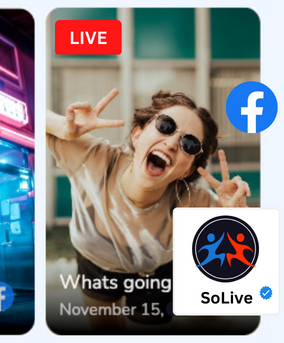Essential Tips for Live Streaming Sports Events

The digital age has transformed how we consume sports. No longer do fans need to physically attend games or be in front of their TVs to witness the thrill of competition. Live streaming of sports events has revolutionized the way fans engage with their favorite teams and players. But how can you ensure a successful live sports stream? Let's dive into some essential tips.
Understanding Live Streaming
Live streaming is a digital marvel, allowing real-time broadcasting of events over the internet. This technology creates a bridge between the event and viewers located in any corner of the world, enabling participation virtually. In essence, live streaming transforms geographical constraints into a global reach, fostering a worldwide community of viewers.
Live streaming caters to various use cases - sports matches, music concerts, webinars, educational courses, corporate meetings, product launches, and so much more. For instance, the introduction to live streaming offers a comprehensive understanding of this transformative technology, while showcasing how it's effectively utilized for product launches and demonstrations. In the sphere of sports, live streaming has significantly evolved the viewer experience, expanding far beyond the constraints of traditional television broadcasting.
Preparation is Key
Equipment Setup
Just like a sports team would never enter a game without the necessary gear, a live stream also requires a specific set of equipment to function smoothly. The foremost on your list should be a high-quality camera capable of capturing clear, high-resolution footage. Depending on the scale of your event, you may require multiple cameras to capture different angles and viewpoints.
You'll also need microphones to capture sound. A variety of mics exist for different purposes - lapel mics for commentators, shotgun mics for capturing ambient sounds, and more. Remember, your viewers need to hear what's happening as much as they need to see it.
Encoders play a crucial role in converting the raw footage and audio into a format suitable for streaming over the internet. Depending on your budget and needs, you can opt for a hardware or software encoder. Finally, a reliable computer system is necessary to manage the live stream, ensuring everything runs smoothly.
As you can see, the quality of your live stream is heavily dependent on the quality of your equipment. Just like a sports team invests in the best gear, invest wisely in your live streaming setup to guarantee the best possible viewer experience.
Internet Connection
The final piece of the puzzle for successful live streaming is a robust and stable internet connection. Regardless of how exceptional your video and audio might be, if your stream is constantly buffering or drops out entirely due to a poor internet connection, your viewers will likely tune out.
Ideally, you should have a dedicated internet connection for your live stream. Wired connections tend to be more reliable than wireless ones, but if you must use Wi-Fi, ensure it's of high quality and there are minimal devices connected to it. As a rule of thumb, aim for an upload speed that is 1.5 to 2 times your stream's bitrate.
In a nutshell, your live stream's quality is as good as your weakest link. Solid preparation, especially with equipment setup and internet connection, sets the foundation for a successful live streaming experience.
Select the Right Streaming Platform
Choosing the right streaming platform is crucial as it is the gateway that connects your live stream to your audience. There's a vast array of platforms available, each with its unique strengths, features, and audiences. The key is to understand the nature of your content and where your target audience is most likely to engage.
For instance, if your sports event is a gaming tournament, platforms like Twitch would be the ideal choice. Twitch has built a robust community around gaming and esports, providing the right environment for such content. On the other hand, if you're live streaming a sports conference or seminar, LinkedIn could be your go-to platform, as it offers a professional networking environment that caters to business-centric content.
The selection process should also consider the platform's features, such as its streaming quality, interaction capabilities, and whether it allows embedding Twitch streams on your website, for example. By selecting the right platform, you ensure your live stream reaches the most suitable audience, leading to higher engagement and success.
FYI: You can embed YouTube Live automatically with the EmbedVidio platform. Start a free trial and display your social media video widgets now.

Embed live video feeds on your website automatically!
Try EmbedVidio and automatically add YouTube, Facebook, and Twitch live video feeds to your website.
All features included with every planThe Importance of High-Quality Video and Audio
The quality of your video and audio is paramount in live streaming sports events. Crisp visuals and clear audio are non-negotiable elements for viewer satisfaction. Low-quality streams can be a distraction and could lead to viewers leaving your live stream.
In terms of video, ensure you're streaming at the highest possible resolution that your equipment and internet connection can handle. This ensures your viewers can see every detail, every move, and every goal. Lighting also plays a crucial role in video quality, so ensure your event is well-lit.
Audio quality is just as important as video quality. Clear audio allows your viewers to understand the commentary and immerse themselves in the atmosphere of the event. Invest in good microphones that can accurately capture voices and ambient sounds.
Furthermore, consider using top video editing software for any post-production needs. This can include creating highlights of the event, which can be shared on social media to attract more viewers for future streams.
Engaging with Your Audience
Engagement is a critical aspect of live streaming. It transforms your live stream from a one-way broadcast into a two-way interaction, creating a sense of community among viewers. Consider interacting with your audience through live chats and comments, responding to their questions, or addressing their observations.
This type of interaction makes viewers feel valued and involved in the event. Plus, it can spur discussions among viewers, further boosting engagement. To better manage and boost this interaction, consider employing strategies to increase engagement during your live streams, as discussed in our posts about increasing engagement during your live streams.
Remember, your audience is not just a viewer count; they're a community. Engage with them, value their input, and they'll likely stick around for the long haul.
Closed Captioning and Accessibility
Incorporating closed captions into your live streams is an essential step towards inclusivity and accessibility. Closed captioning ensures that viewers who are deaf or hard of hearing can follow along with your content. Moreover, they can be a valuable tool for those watching in a noisy environment or when they cannot use sound for any reason.
As you strive to make your live streams more inclusive, consider the value of closed captioning in your broadcasts. And it's not just about accessibility; closed captioning can also significantly improve the user experience. It allows for a better understanding of the event and can even help increase viewer retention. To understand more about how this can enhance your video content, take a look at the importance of closed captioning for video content.
Optimizing Your Stream for Mobile Devices
As more and more viewers consume content via mobile devices, it's crucial to optimize your live streams for mobile viewing. This process involves ensuring that your stream is responsive and delivers a high-quality viewing experience across various screen sizes and device types.
Optimizing your stream for mobile devices could involve adjusting the format and layout of your content, optimizing your video resolution and aspect ratio, or even selecting a streaming platform that offers excellent mobile support. Learn more about this crucial aspect by exploring our guide on optimizing live streaming video for mobile devices.
Using Analytics to Improve Your Content
Analytics provide essential insights into viewer behavior, and these insights can guide your content strategy. They help you understand what works and what doesn't, allowing you to tailor your content accordingly.
Key metrics to consider include viewer count, average watch time, audience location, and interaction rates. Leveraging these insights, you can create more engaging content, select the best times to stream, and find ways to improve viewer engagement. Find out more about using video analytics to improve your social media video content.
Boosting Brand Awareness with Live Streams
Live streaming presents an excellent opportunity to boost brand awareness. Whether it's a sports event or a product launch, live streaming can put your brand in the spotlight and attract a broader audience.
Moreover, live streams can humanize your brand, allow for real-time interaction with the audience, and give viewers a behind-the-scenes look at your operations. Consider adding elements like video testimonials and reviews in your streams to showcase real-world experiences with your brand or products. Learn more about boosting brand awareness with video testimonials and reviews.
Monetizing Live Streaming Sports Events
There's no denying that live streaming can be a profitable endeavor. And with sports events, the potential for monetization is even more significant. Various ways to monetize your live streams include sponsorships, donations, advertisements, subscriptions, or selling merchandise during the event.
However, monetization requires careful planning and the right platform. Different platforms have different monetization features, and you need to select one that aligns with your monetization strategy. Read about the best practices and platforms for monetizing live streaming events.
Video Thumbnails and Eye-Catching Imagery
An attractive thumbnail can make all the difference when it comes to drawing more viewers to your live streams. Thumbnails act as the cover of your video and play a crucial role in the viewer's decision to click or scroll past your content.
A compelling thumbnail not only grabs attention but also provides a glimpse into what your stream is about. Learn more about how to create eye-catching images for maximum clicks.
Optimizing Your Live Streams for SEO
In addition to producing high-quality content, you need to ensure that your live streams are easy to find. SEO optimization plays a significant role in enhancing the visibility of your streams.
Incorporating relevant keywords, writing compelling descriptions, and leveraging tags are just a few ways you can optimize your live streams for SEO. For a deeper dive into this topic, explore our guide on how to optimize video content for search engines.
Conclusions
Live streaming sports events can be challenging, but with the right preparation, equipment, and engagement strategies, it can be a game-changer in the sports industry. Remember to embrace analytics and SEO to maximize your reach, and don't underestimate the power of high-quality video, audio, and interaction in creating an unforgettable viewer experience.
FYI: You can embed Facebook Live automatically with the EmbedVidio platform. Start a free trial and display your social media video widgets now.

Embed live video feeds on your website automatically!
Try EmbedVidio and automatically add Facebook, YouTube, and Twitch live video feeds to your website.
All features included with every plan